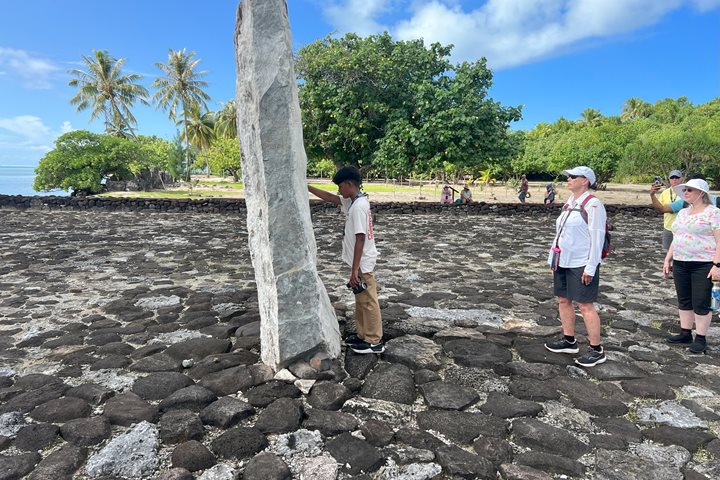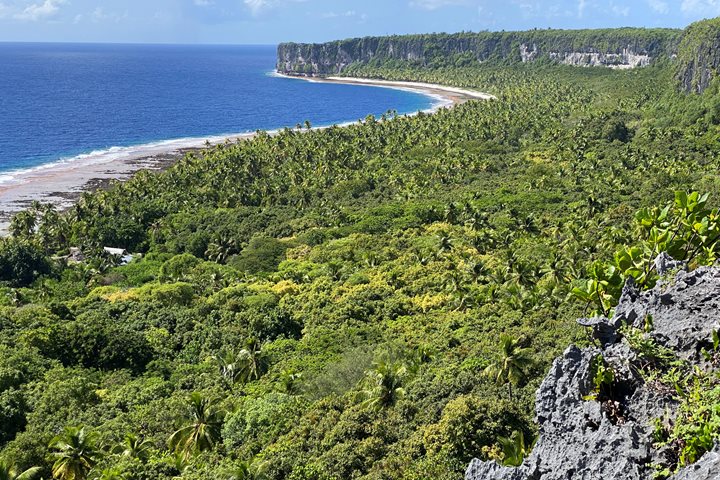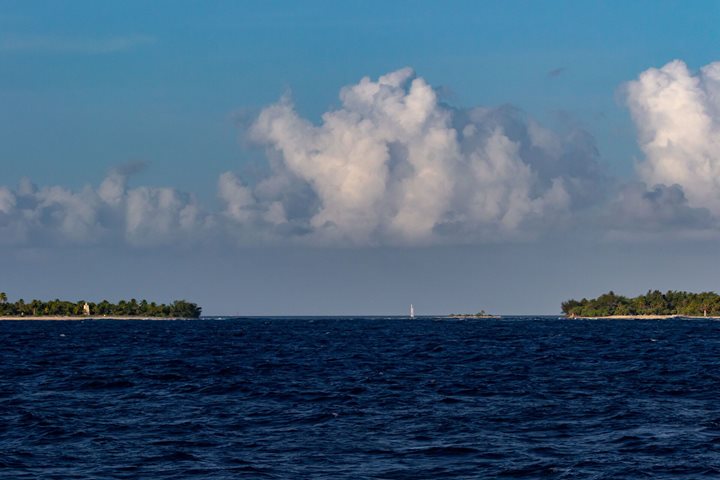Tahanea Atoll is located in the central region of the Tuamotu Group, which is part of French Polynesia. We knew very little about Tahaena Atoll, apart from what we could see on the charts, so our visit was an expedition stop. Tahanea Atoll is quite large, measuring 48 km (29.8 mi) long by 15.2 km (9.44 mi) wide. The wide and deep inner lagoon covers about 525 km² (200 mi²) and the land area covers about 8 km² (3 mi²). There are three passes on NE side of the atoll that give access to the interior lagoon, and the middle one (Teavatapu) is wide enough and deep enough to have allowed us to bring our ship right inside for an anchorage. The southern reef fringing the atoll is wider than the northern one, but the largest islands are on the narrower northern rim. There once were several small settlements here, but today Tahanea is uninhabited, although it is visited occasionally by islanders from neighboring atolls. Small groups of people come to the island seasonally to harvest coconuts and produce copra.
The southern-most pass afforded us some exciting drift snorkeling in the morning. We offered two rounds of this adventure, because conditions were perfect to let our guests get swept into the lagoon by a strong, swift tidal movement. The coral is robust and healthy in the pass and it was interesting to watch the little fish struggling hard to stay near their chosen nooks and crannies while the water was pushing through. The first group of snorkelers was swept through so quickly, there was time to do it again! The second group (which included a few from the first bunch that wanted to experience it yet again) began their drift, but partway through it the flow slowed suddenly and started moving in the opposite direction! The change was so fast, they all just stayed in the water and enjoyed it. The SCUBA divers also enjoyed the reef this morning and went to the northern-most channel for another amazing underwater experience.
In the meantime, nearly half of the guests opted to go ashore and explore the uninhabited motu right near the ship’s anchorage. This islet is very different from what we had experienced during the previous part of the voyage. It is rugged and composed of a solid, slightly raised dark coralline platform upon which is loose, unconsolidated coral rubble. There is virtually no sand to be seen onshore. The plant life is fascinating, as it must survive in extremely poor soil, but it is beautifully adapted to this situation and is thriving. The inner shoreline was littered with seashells, although many were broken and badly worn, and we could see lots of fish in the shallows, such as parrot fish and surgeon fish, and even an eagle ray inside a shallow tidal lagoon near the landing. We also could see some giant clams in the lagoon. As we walked about, most of us heard the beautiful songs of the endemic Tuamotu reed warbler…and a few of us even managed to see one.
After lunch, we organized more water activities. The snorkelers went out again, only this time they explored the inner reef system by way of the wonderful snorkel platform. The SCUBA divers went to a different dive site from the one they experienced in the early morning. In addition, the glass-bottomed Zodiac (GBZ) was put in the water in order to revisit the southern-most pass and show it to those who didn’t get to see it earlier. It was quite fun to shut off the engine of the GBZ and let the current take it through the pass as we witnessed standing surface waves along either side and robust coral below us. Everyone returned to the ship in the late afternoon around tea time, so there was still enough sunlight for the Captain to see his way safely back out of the lagoon and get us underway towards our next destination.







